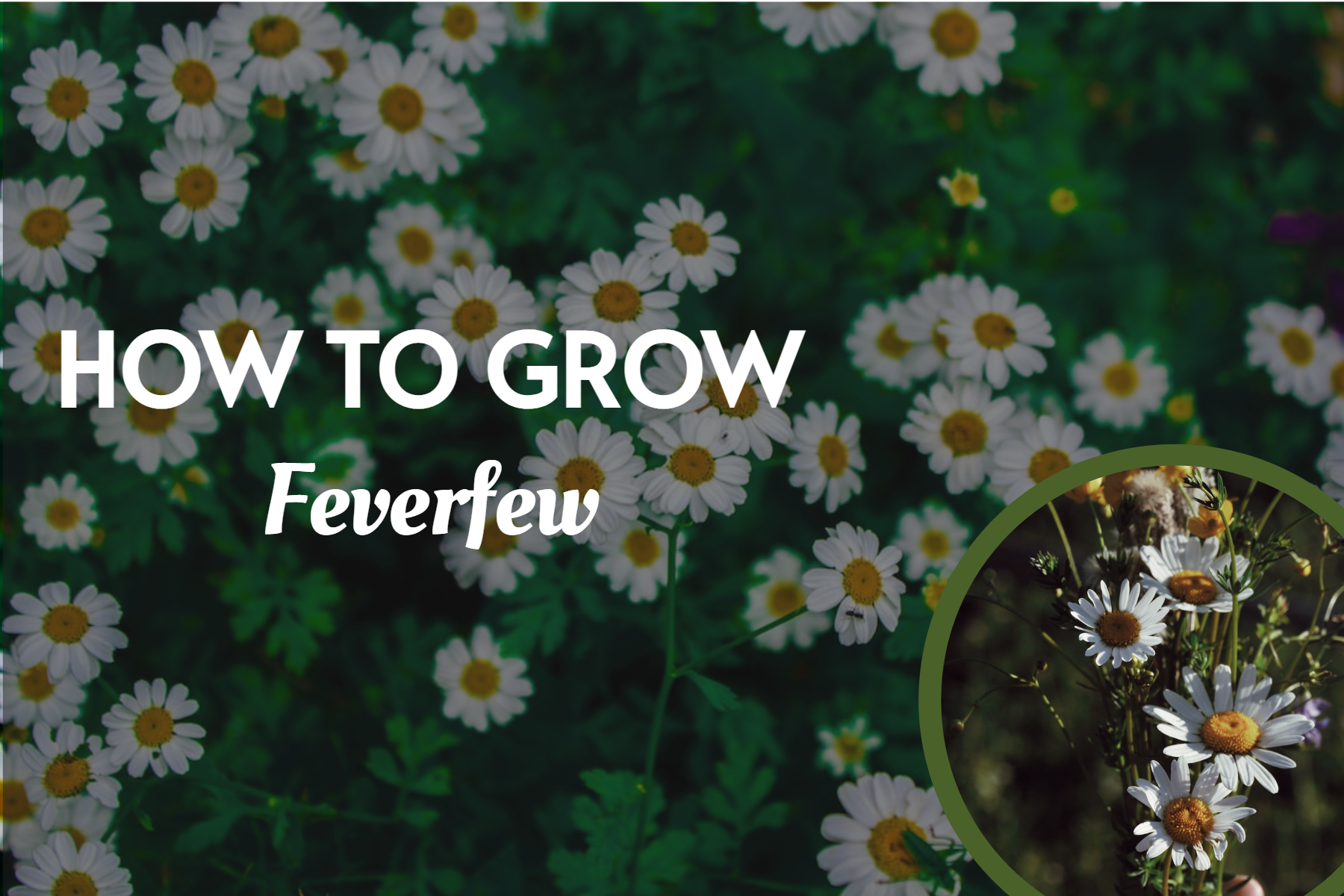Last Updated on April 5, 2024 by Real Men Sow
Feverfew, a perennial that looks like a daisy-like flowering herbaceous perennial, can be used in gardens to add beauty and utility. This is a small perennial that grows to approximately 50 cm in height and can spread up to 50cm with bushy growth. It is also aromatic, with pinnately lobed ovate leaflets and small daisy-like flowers that bear white petals and a yellow centre in the summer.
It is a great choice as a perennial border or for the guild of beneficial companion plants for fruit trees in your garden. Feverfew is a great choice for your plants and the ecosystem.
Benefits of Growing Feverfew in Your Garden
Feverfew can be an attractive ornamental plant and requires very little maintenance. Although it’s a short-lived perennial, feverfew can be a beautiful addition to your garden. As long as the plant grows in a good location, further sowing is not necessary.
Growing Feverfew in your garden can provide many benefits. It is claimed to repel insect pests during active growth, but this is a rumor not backed up by scientific evidence.
It is often said that it makes a great companion plant for other perennial plants. You might also want to place it near a doorway or sitting area to repel unwanted insects. Feverfew can also be used in your garden and home for a variety of yields.
Planting Feverfew
Feverfew is an ideal cottage garden plant and can be used in both informal and diverse planting plans. It is also suitable for perennial borders or in a designated perennial herb gardening area.
Feverfew’s pest-repelling qualities may make it useful for aphid control near roses or as a part of the sunny fringes a fruit tree guild. Feverfew needs plenty of sunlight, so make sure it is in full sun. It can withstand exposure or shelter, but it is not able to withstand maritime exposure.
Sowing & Planting
Feverfew can be sow indoors in March, or directly in the garden in April or May after any frost risk has passed. You plant out the ones you sowed indoors between May and July.
The seeds should be barely covered. It is also important that the tray or pot does not dry out. When the seedlings have grown sufficiently large to be handled, you can prick them into individual plants for growth before planting them in their final positions.
Propagation
You can make new plants by dividing the existing Feverfew plants. It is important to remember that plants divided don’t usually live for very long so this is not a good idea. You can either save the seeds for new plants or let them self-seed.
Companion Plants
Feverfew is a good choice for rose bushes. It pairs well with hardy Geraniums (cranesbill), Clovers and Cerinthe major as well as a variety of traditional cottage garden plants. It can be grown in a herb garden with other perennial herbs, such as Mediterranean herbs that prefer free-draining conditions.
General Care Guide
Soil Requirements
Remember that feverfew requires well-drained loamy, sandy soil. However, it is fairly straightforward when it comes to fertility and pH. It can be grown on or in stone walls and in containers, provided that there is adequate drainage.
Watering
When feverfew has reached its final position in the garden, it will be relatively drought-tolerant. It will not require watering in extreme dry conditions or when it is growing in containers. The soil must be moist, but not draining. It is important to not overwater your plants.
Feeding
Feverfew can be grown in conditions that are not ideal for it.
Deadheading
The plants will not self-seed prolifically if they are deadheaded by feverfew. If you want to keep them contained, deadhead your plants before the seeds develop.
You can also collect the seeds from your plant to control their direction and then plant them next year. You can also let the plants self-seed to make it a natural and low-maintenance option.


